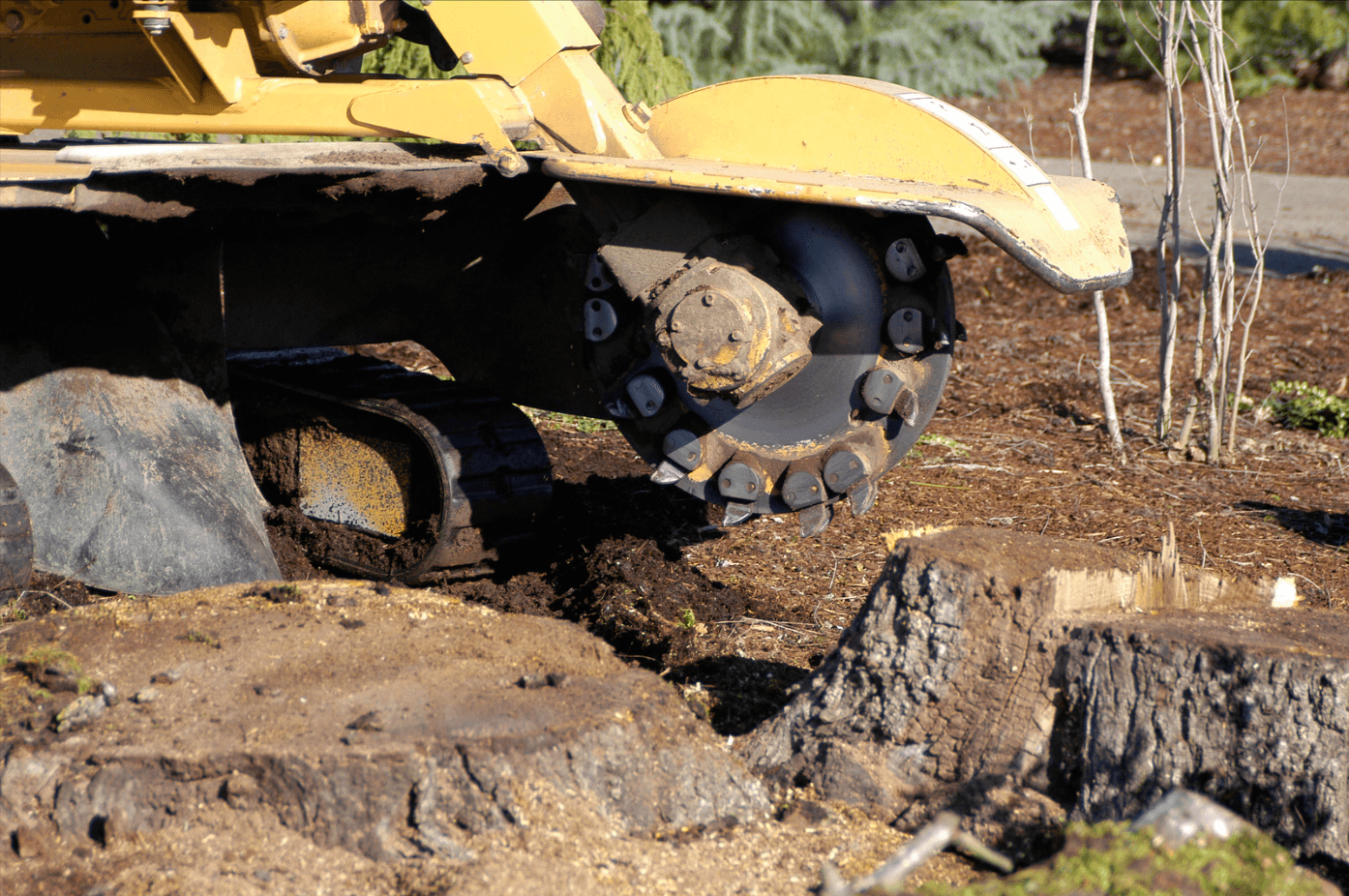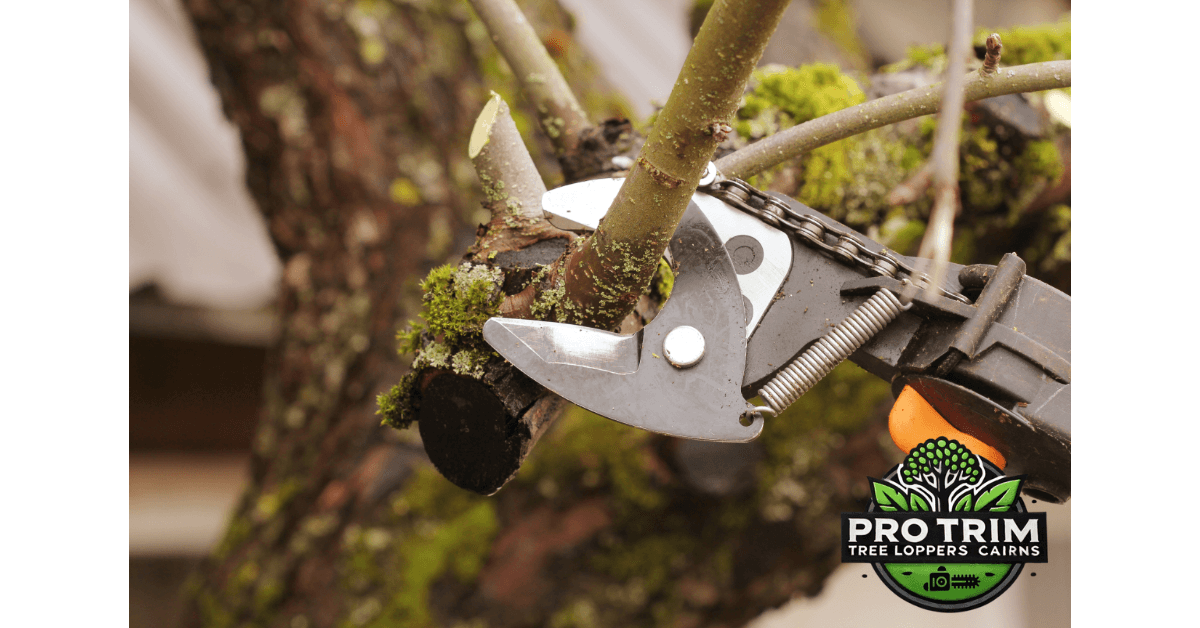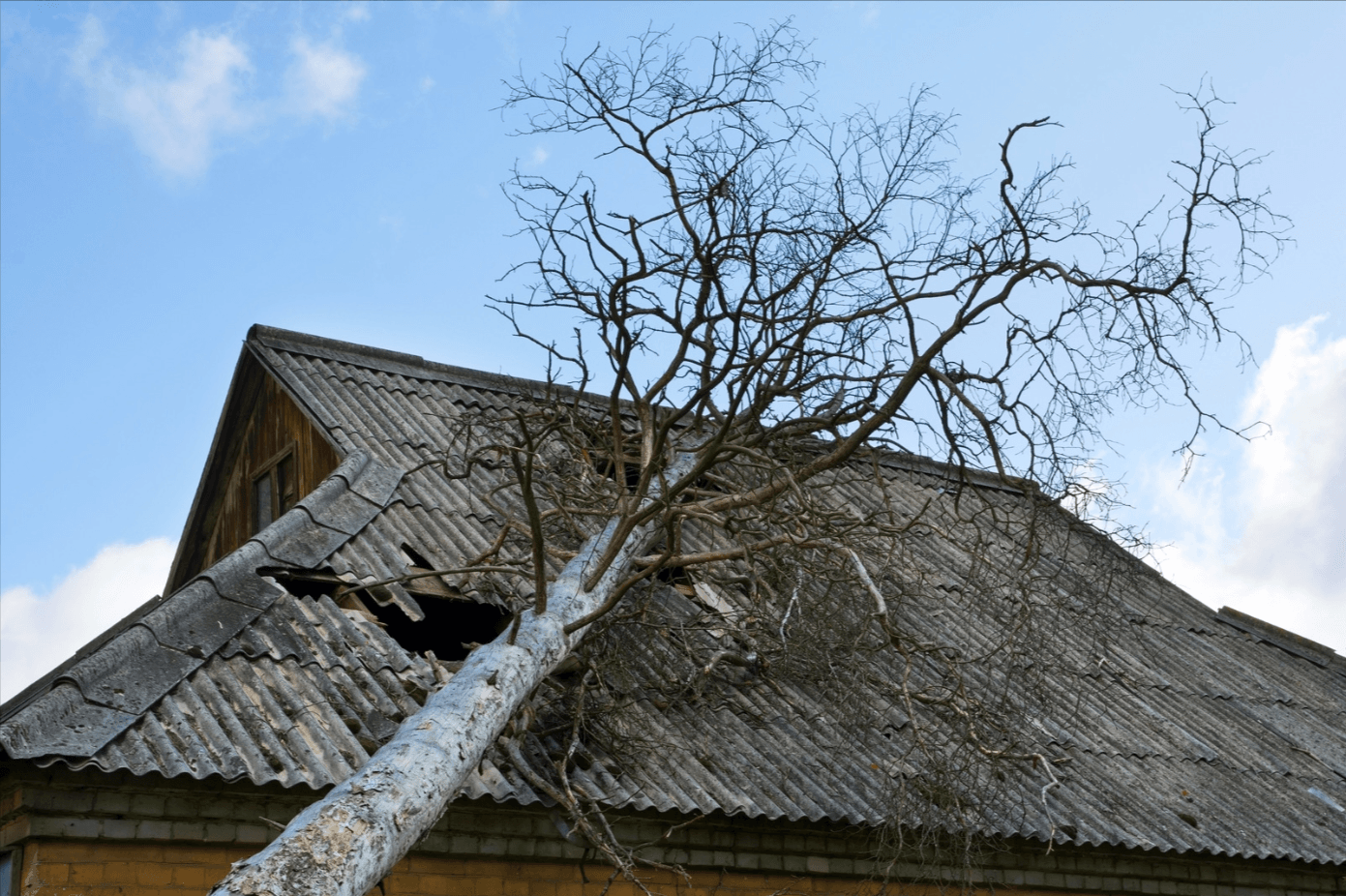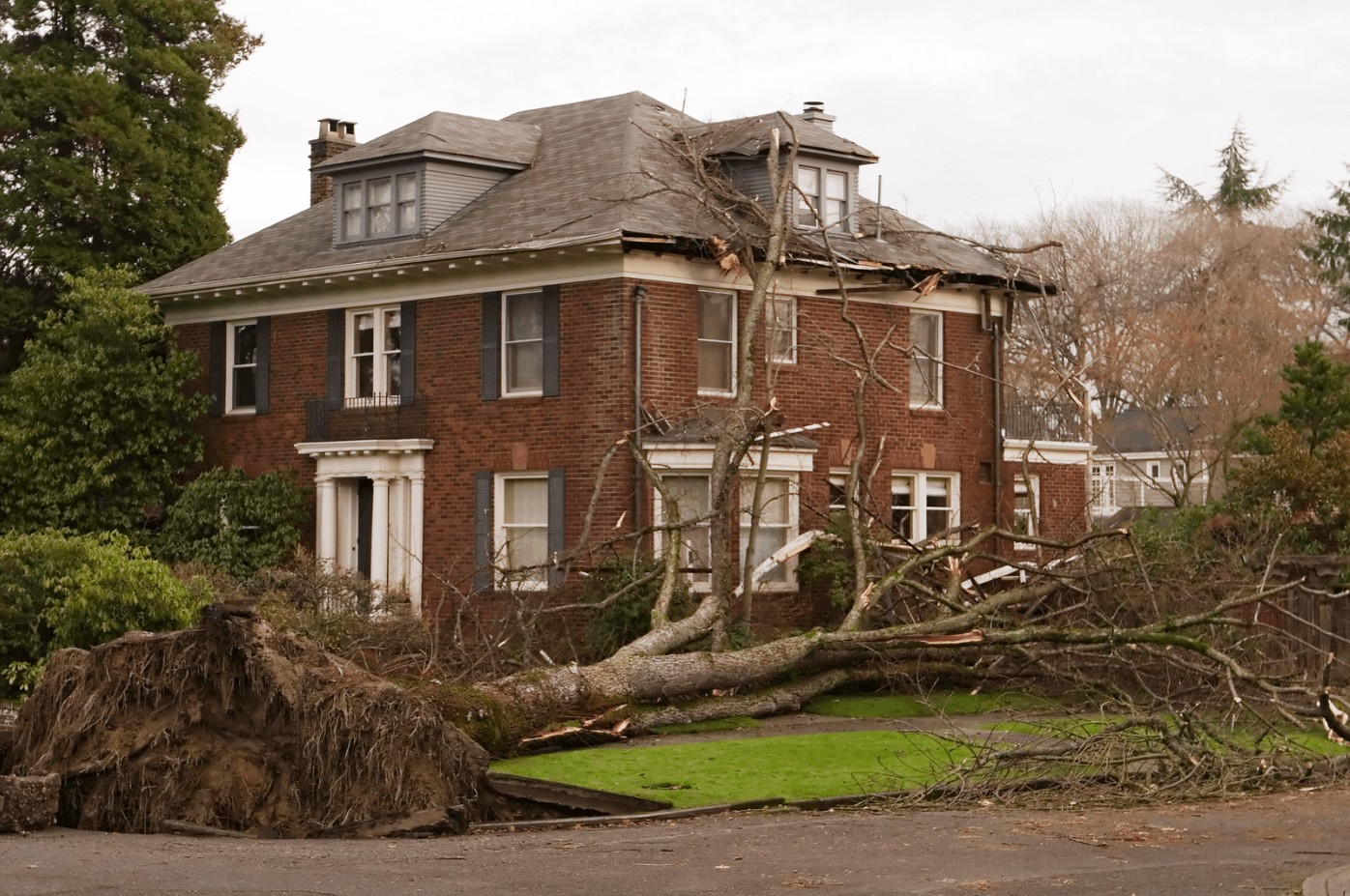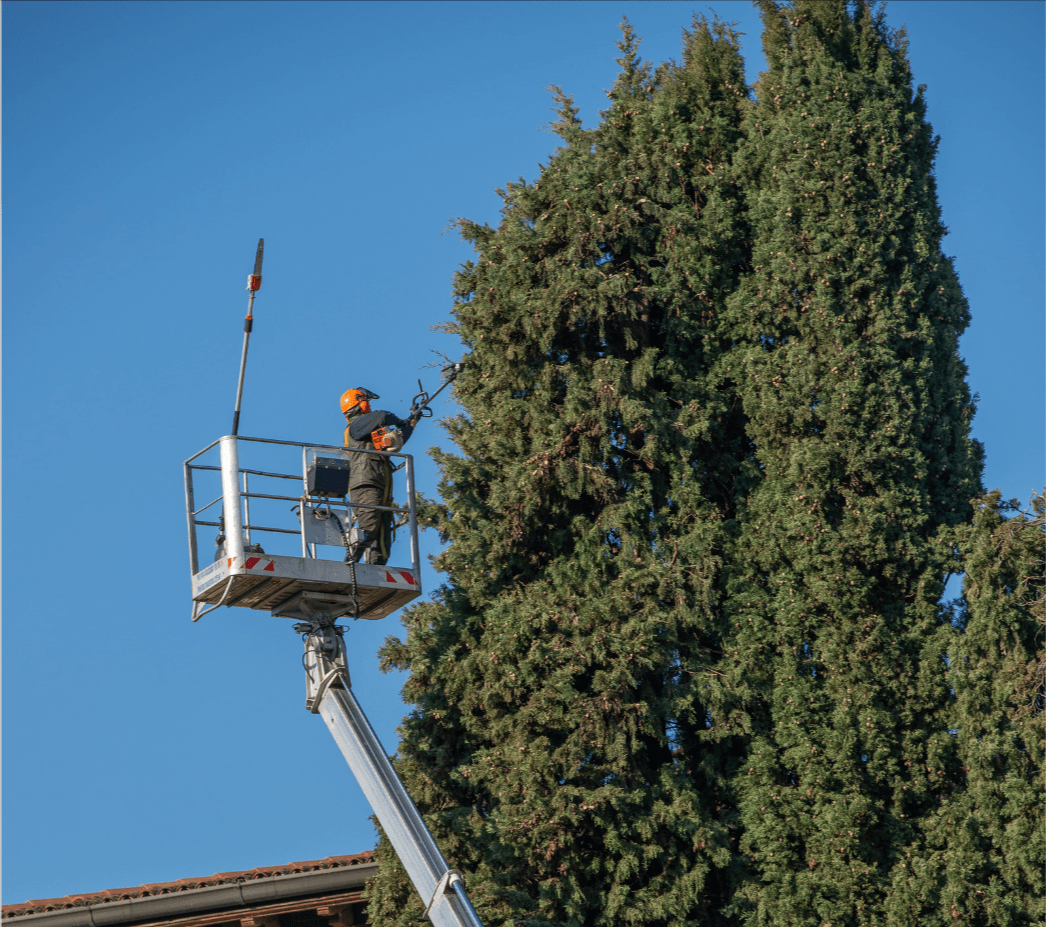Introduction
After a tree is felled, the stump left behind can be an eyesore, a tripping hazard, and a potential host for pests and diseases. Stump grinding is a widely used and effective method for removing these remnants, allowing for a clean and usable landscape. Pro Trim Tree Loppers Cairns specialises in professional stump grinding services, utilising modern equipment and techniques to efficiently remove stumps from residential and commercial properties across Cairns.
This comprehensive guide will explore the process of stump grinding, its benefits, and considerations for property owners. Whether you’re dealing with a single stump or multiple remnants from a larger tree removal project, understanding stump grinding can help you make informed decisions about your landscape management.
The Stump Grinding Process
Stump grinding is a mechanical process that uses specialised equipment to remove tree stumps by reducing them to wood chips.
Equipment used (types of stump grinders)
Stump grinders come in various sizes and types to suit different job requirements:
- Portable grinders:
- Small, wheeled machines suitable for residential use
- Can access tight spaces and navigate through gates
- Ideal for smaller stumps up to 30 cm in diameter
- Self-propelled grinders:
- Larger machines with more powerful engines
- Can handle stumps up to 60 cm in diameter
- Suitable for both residential and commercial jobs
- Tow-behind grinders:
- Large machines towed by vehicles
- Capable of grinding stumps over 1 metre in diameter
- Used for large-scale commercial or forestry operations
- Truck-mounted grinders:
- Extremely powerful machines mounted on specialised trucks
- Used for the largest stumps and high-volume jobs
- Typically employed by professional tree services
Professional insight: The choice of grinder depends on factors like stump size, site accessibility, and the number of stumps to be removed.
Preparation of the area
Proper site preparation is crucial for safe and efficient stump grinding:
- Clearing the area:
- Remove rocks, debris, and any metal objects around the stump
- Trim any low-hanging branches that might interfere with the grinder
- Soil assessment:
- Check for underground utilities using dial-before-you-dig services
- Identify any potential obstacles like large roots or rocks
- Safety measures:
- Set up safety barriers or cones to keep bystanders at a safe distance
- Ensure proper personal protective equipment (PPE) is worn by operators
- Stump assessment:
- Measure the stump’s diameter and height above ground
- Identify any visible decay or structural issues
Preparation tip: If the stump is freshly cut, consider waiting a few weeks for it to dry out, which can make grinding easier and more efficient.
Step-by-step grinding procedure
The stump grinding process typically follows these steps:
- Positioning the grinder:
- Place the grinder at the edge of the stump
- Ensure the cutting wheel is aligned with the highest part of the stump
- Initial grinding:
- Start the grinder and lower the cutting wheel onto the stump
- Move the wheel side to side, grinding away the top layer
- Deepening the cut:
- Gradually lower the cutting wheel, removing 2-5 cm of wood with each pass
- Continue this process, working across the entire stump surface
- Grinding roots:
- Once the main stump is ground down, address any visible surface roots
- Grind these roots to a similar depth as the main stump area
- Final passes:
- Make several passes over the entire area to ensure a consistent depth
- Typically, stumps are ground to 10-20 cm below ground level
- Clean-up:
- Remove the grinder and rake the wood chips and debris
- Fill the hole with the ground material or topsoil as desired
Professional approach: Experienced operators adjust their technique based on the wood hardness, stump size, and presence of any decay or obstacles.
Advantages of Stump Grinding
Stump grinding offers several benefits over other stump removal methods.
Complete removal of visible stump
Stump grinding effectively eliminates the above-ground portion of the stump:
- Aesthetic improvement:
- Removes unsightly stumps that can detract from landscape appearance
- Creates a clean, level surface for replanting or landscaping
- Safety enhancement:
- Eliminates tripping hazards in yards and gardens
- Reduces risks associated with decaying stumps
- Pest prevention:
- Removes potential habitats for termites and other wood-boring pests
- Helps prevent fungal growth that can spread to other plants
Pro tip: For complete eradication, consider combining stump grinding with root treatment to prevent regrowth.
Minimal impact on surrounding landscape
Stump grinding is a relatively non-invasive process:
- Localised effect:
- Impacts only the immediate area around the stump
- Preserves surrounding plants and landscaping features
- Soil preservation:
- Unlike excavation, grinding doesn’t remove large amounts of soil
- Maintains the existing soil structure and microbial life
- Reduced heavy machinery:
- Most grinders are compact and manoeuvrable
- Minimises damage to lawns and garden beds from large equipment
Environmental consideration: The minimal disturbance helps preserve soil ecology and reduces the risk of erosion.
Repurposing of ground area
Stump grinding creates opportunities for immediate land use:
- Planting options:
- Area can be quickly repurposed for new plants or trees
- Ground wood chips can be mixed with soil to improve structure
- Landscaping flexibility:
- Allows for the creation of new garden beds or lawn areas
- Provides a clean slate for landscape redesign
- Construction potential:
- Cleared area can be used for small structures or hardscaping
- Eliminates obstacles for future construction projects
Creative idea: Consider using the ground area for a raised garden bed or a decorative landscape feature.
Alternatives to Stump Grinding
While stump grinding is often the preferred method, other options are available:
Chemical stump removal
Using chemicals to accelerate decay:
- Process:
- Drill holes in the stump and apply potassium nitrate
- Cover the stump to retain moisture and speed decomposition
- Advantages:
- Low cost and minimal physical effort
- Suitable for remote or hard-to-access stumps
- Disadvantages:
- Slow process, taking months or even years
- Potential environmental impact from chemicals
Safety note: Chemical stump removers should be used cautiously, especially in areas with children or pets.
Manual stump removal
Physically digging out the stump and roots:
- Methods:
- Using hand tools like shovels, axes, and mattocks
- Employing winches or come-alongs for leverage
- Advantages:
- No special equipment required
- Complete removal of stump and major roots
- Disadvantages:
- Extremely labour-intensive and time-consuming
- Can cause significant soil disturbance
Suitability: Manual removal is generally only practical for small stumps or in areas where machinery can’t access.
Natural decay process
Allowing the stump to decompose naturally:
- Process:
- Accelerate decay by keeping the stump moist and adding nitrogen
- Can be combined with inoculation of decay-promoting fungi
- Advantages:
- Minimal effort and cost
- Environmentally friendly approach
- Disadvantages:
- Very slow process, taking several years
- Stump remains a potential hazard or eyesore during decay
Eco-friendly option: Consider creating a feature from the decaying stump, such as a natural planter or wildlife habitat.
Considerations Before Grinding
Several factors should be evaluated before proceeding with stump grinding:
Underground utilities and obstacles
Identifying underground hazards is crucial for safety:
- Utility lines:
- Use dial-before-you-dig services to locate underground utilities
- Mark the location of any known pipes or cables
- Irrigation systems:
- Identify and mark sprinkler lines and heads near the stump
- Consider temporarily disabling nearby irrigation zones
- Buried objects:
- Be aware of potential buried debris, especially near old buildings
- Use metal detectors to identify any hidden metal objects
Safety first: Always prioritise safety by thoroughly investigating the area before grinding.
Proximity to structures and other plants
Consider the stump’s location relative to its surroundings:
- Buildings and foundations:
- Assess potential impacts on nearby structures
- Take extra care when grinding near retaining walls or foundations
- Other plants:
- Protect surrounding vegetation from wood chips and debris
- Consider the impact on nearby root systems
- Hardscaping:
- Protect nearby patios, walkways, or driveways from damage
- Use plywood sheets to distribute the grinder’s weight on delicate surfaces
Professional assessment: For stumps close to structures or valuable plants, consider having a professional arborist assess the situation.
Size and age of the stump
The stump’s characteristics affect the grinding process:
- Diameter and height:
- Larger stumps require more powerful equipment and longer grinding times
- Very wide stumps may need multiple grinding sessions
- Wood hardness:
- Hardwoods like ironbark or gum trees require more time and power to grind
- Softwoods like pine generally grind more quickly
- Age and decay:
- Older, partially decayed stumps may grind more easily
- Very old stumps might have hidden cavities or debris
- Root system:
- Consider the extent of the root system, especially for mature trees
- Decide whether surface roots need grinding as well
Expert tip: For very large or complex stumps, consider hiring a professional service with appropriate equipment and experience.
Post-Grinding Care and Landscaping
After grinding, proper site management is essential for successful landscape integration:
Filling the resulting hole
Properly filling the ground area ensures a level surface:
- Material options:
- Use the resulting wood chips mixed with topsoil
- Bring in clean fill dirt or topsoil for a fresh start
- Filling process:
- Layer the fill material, tamping down each layer to prevent settling
- Overfill slightly to account for natural settling over time
- Soil amendment:
- Consider adding compost or other organic matter to improve soil quality
- Test soil pH and adjust if necessary for future planting
Landscaping tip: If replanting in the area, consider creating a raised bed to ensure adequate soil depth.
Soil treatment and improvement
Prepare the area for future use:
- pH balancing:
- Test soil pH after grinding, as wood chips can alter soil acidity
- Add lime to increase pH or sulfur to lower it as needed
- Nutrient enrichment:
- Add balanced fertiliser to replenish nutrients
- Consider using slow-release fertilisers for long-term benefits
- Soil structure:
- Incorporate organic matter to improve soil texture and water retention
- Use gypsum in clay soils to improve drainage
Professional advice: Consult with a local garden centre or horticulturist for soil improvement recommendations suited to Cairns’ climate.
Replanting options
Consider various options for the newly cleared area:
- New tree planting:
- Choose a species appropriate for the space and local conditions
- Plant away from the old stump site to avoid any remaining roots
- Garden bed creation:
- Use the area for a new flower bed or vegetable garden
- Consider raised beds if soil depth is a concern
- Lawn extension:
- Level the area and sow grass seed or lay turf
- Ensure proper soil preparation for successful lawn establishment
- Hardscaping:
- Use the space for a new patio, pathway, or other hardscape feature
- Ensure proper compaction and base preparation
Creative suggestion: Consider creating a themed garden area that complements your existing landscape design.
Safety Aspects
Safety is paramount in the stump grinding process:
Personal protective equipment
Proper PPE is essential for operator safety:
- Eye protection:
- Safety glasses or goggles to protect against flying debris
- Face shield for additional protection
- Hearing protection:
- Earmuffs or earplugs to guard against loud machine noise
- Respiratory protection:
- Dust mask or respirator to prevent inhalation of wood particles
- Protective clothing:
- Long sleeves and trousers to protect against flying debris
- Steel-toed boots for foot protection
- Hand protection:
- Heavy-duty gloves to protect against splinters and debris
Safety reminder: Always use appropriate PPE, even for small grinding jobs.
Debris control and management
Controlling debris is crucial for safety and clean-up:
- Containment methods:
- Use tarps or plywood sheets to catch flying chips
- Consider using portable barriers for larger jobs
- Clean-up techniques:
- Rake chips into piles for easy collection
- Use a leaf blower to clear fine debris from surrounding areas
- Disposal options:
- Repurpose chips as mulch in garden beds
- Check local regulations for proper disposal of excess material
Environmental note: Wood chips can be a valuable resource for garden mulch or composting.
Precautions for homeowners and professionals
Both DIY enthusiasts and professionals should observe these precautions:
- Machine familiarity:
- Thoroughly read and understand the grinder’s operating manual
- Practice on smaller stumps before attempting large or complex jobs
- Site preparation:
- Clear the area of obstacles and potential projectiles
- Mark underground utilities and irrigation lines
- Bystander safety:
- Keep spectators at a safe distance, preferably behind a barrier
- Be aware of potential chip projection paths
- Weather considerations:
- Avoid grinding in wet conditions due to increased slip hazards
- Be cautious of wind direction to control chip dispersal
Professional standard: Always prioritise safety over speed or convenience when operating stump grinders.
FAQ
How deep does stump grinding go?
The depth of stump grinding can vary based on several factors:
- Standard depth:
- Typically, stumps are ground to 10-20 cm below ground level
- This depth is sufficient for most landscaping purposes
- Factors affecting depth:
- Client preferences and intended land use
- Local regulations or landscaping requirements
- Presence of large roots or underground obstacles
- Deep grinding:
- Some situations may require grinding to 30 cm or more
- Deep grinding is often used for construction sites or where complete root removal is necessary
Professional insight: Discuss your specific needs with your stump grinding service to determine the optimal depth for your situation.
Can I grind a stump myself, or should I hire a professional?
The decision to DIY or hire a professional depends on several factors:
- DIY considerations:
- Suitable for small stumps (under 25 cm diameter) in accessible areas
- Requires renting or purchasing a stump grinder
- Demands physical effort and time commitment
- Professional advantages:
- Access to more powerful, efficient equipment
- Experience in handling various stump types and sizes
- Insurance coverage and safety expertise
- Factors to consider:
- Stump size and hardness
- Accessibility of the site
- Your comfort level with operating heavy machinery
- Time and budget constraints
Safety note: If you’re unsure about any aspect of stump grinding, it’s best to consult or hire a professional service.
Will stump grinding kill the tree roots?
Stump grinding primarily affects the visible stump and some of the root system:
- Immediate impact:
- Grinding removes the stump and some of the upper root structure
- It doesn’t directly kill or remove all of the tree’s roots
- Long-term effects:
- Without the stump, the root system loses its nutrient source and will eventually die
- This process can take months or even years, depending on the tree species and size
- Root regrowth potential:
- Some tree species may attempt to regrow from remaining roots
- Regular monitoring and treatment of any sprouts is recommended
Professional approach: For complete root elimination, consider combining stump grinding with chemical root treatment or deep root removal techniques.
How long does the process take?
The duration of stump grinding varies depending on several factors:
- Stump size:
- Small stumps (under 30 cm diameter) typically take 20-30 minutes
- Large stumps (over 60 cm diameter) may require 1-2 hours or more
- Wood hardness:
- Softwood stumps grind more quickly than hardwood species
- Very hard or dense woods may require multiple grinding sessions
- Site conditions:
- Easily accessible stumps are quicker to grind
- Stumps in difficult locations may require additional time for equipment setup and maneuvering
- Number of stumps:
- Multiple stumps in one area can be ground more efficiently
- Large-scale projects may require several days of work
- Equipment used:
- Professional-grade equipment typically works faster than rental machines
- Larger, more powerful grinders can handle bigger stumps more quickly
Professional estimate: A typical residential stump grinding job for one or two average-sized stumps usually takes 1-3 hours, including setup and cleanup.
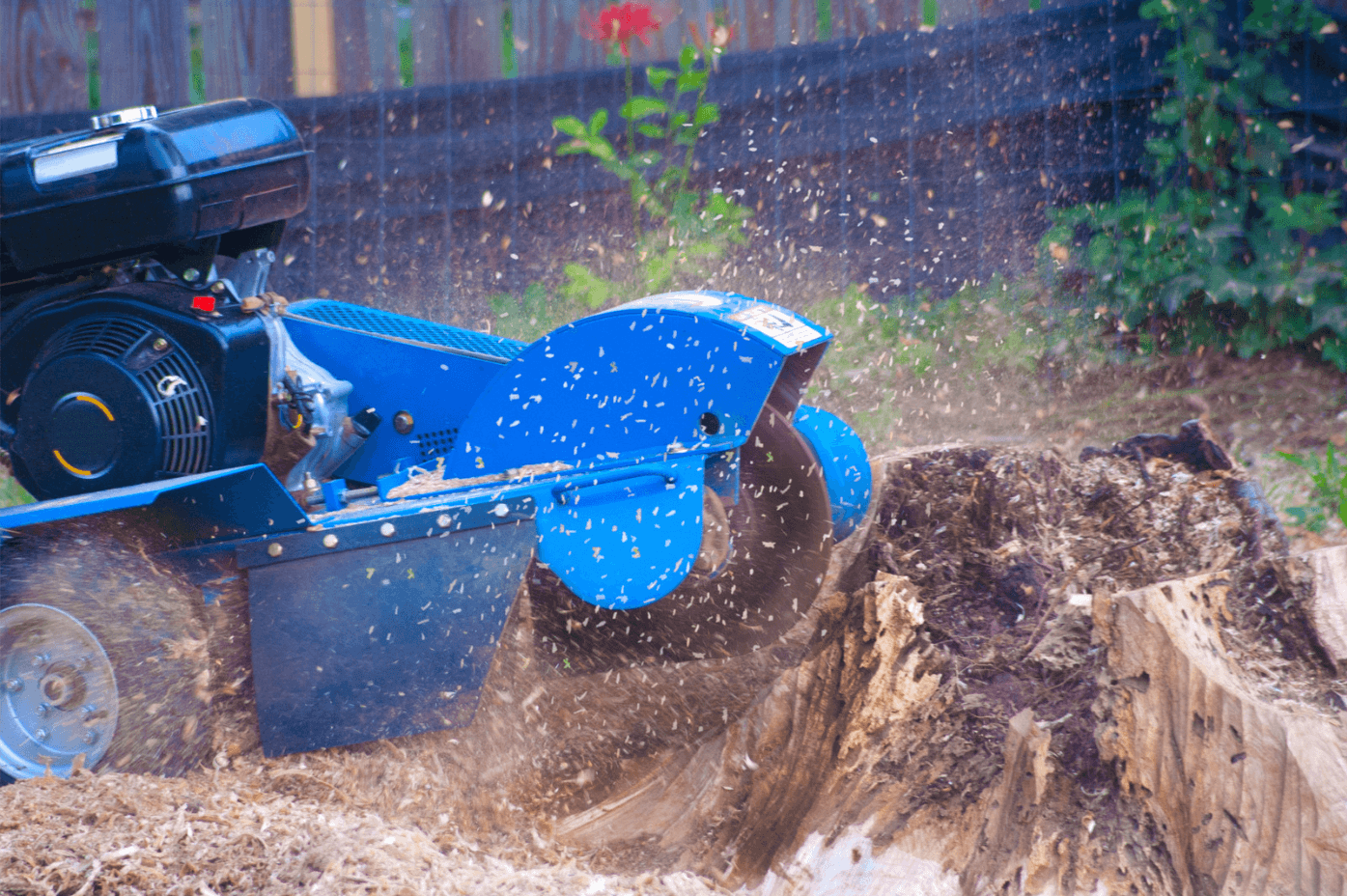
Conclusion
Stump grinding is an efficient and effective method for removing tree stumps, offering numerous benefits for property owners in Cairns. This process not only improves the aesthetics of your landscape but also eliminates potential hazards and creates new opportunities for land use. By understanding the stump grinding process, its advantages, and the considerations involved, you can make informed decisions about managing stumps on your property.
Key takeaways from this guide include:
- The importance of proper site preparation and safety measures
- The versatility of stump grinding for various stump sizes and types
- The minimal impact on surrounding landscape compared to other removal methods
- The need for post-grinding care and landscaping to maximize the benefits
Pro Trim Tree Loppers Cairns is committed to providing professional, safe, and efficient stump grinding services. Our team of experienced arborists and technicians is equipped with state-of-the-art grinding equipment and the expertise to handle stumps of all sizes and types. Whether you’re dealing with a single backyard stump or managing a large-scale property clearing project, we’re here to help you achieve a stump-free landscape.
Remember, while stump grinding can be a DIY project for small stumps, larger or more complex jobs are often best left to professionals. Safety should always be the top priority, and professional services can ensure the job is done efficiently and effectively.
By removing unsightly and potentially hazardous stumps, you’re not only enhancing the beauty of your property but also contributing to the overall aesthetic and safety of Cairns’ urban landscape. A well-maintained, stump-free yard provides more usable space and opens up new possibilities for landscaping and outdoor living.
For more information about tree lopping services, check them out below:


